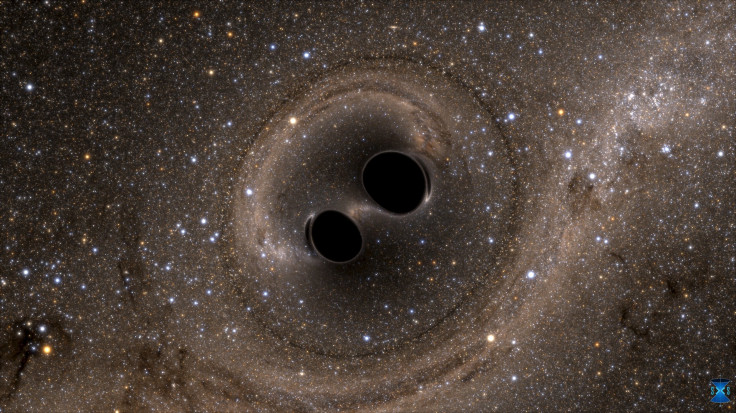NASA’s Fermi Telescope Detects Short Gamma-Ray Burst Possibly Linked To Gravitational Wave Discovery

In February, scientists at the Laser Interferometer Gravitational-Wave Observatory (LIGO) facilities in Washington and Louisiana announced the first-ever detection of gravitational waves, which are ripples in the fabric of space-time itself. The waves detected by the LIGO collaboration were created by two merging black holes 1.3 billion light-years from Earth.
On Monday, a team of NASA scientists announced it had detected a brief flash of high-energy X-rays, lasting only about a second, coming from the vicinity of the same gravitational wave source. If confirmed, the high-energy burst — detected less than half a second after LIGO captured the gravitational waves — would be a landmark discovery, as black hole mergers are believed to be “clean” events that do not emit any radiation.
“This is a tantalizing discovery with a low chance of being a false alarm, but before we can start rewriting the textbooks we’ll need to see more bursts associated with gravitational waves from black hole mergers,” Valerie Connaughton, a member of the Gamma-ray Burst Monitor (GBM) team studying data gathered by NASA’s Fermi Gamma-ray Space Telescope, said in a statement.
Einstein’s general theory of relativity, which posits that gravity warps the fabric of cosmos, tells us that violent events such as the collision of massive objects such as black holes and neutron stars create ripples in the curvature of space-time. These ripples, known as gravitational waves, could, now that they have been detected, allow scientists to test how general relativity operates under extreme conditions — such as the collision of black holes — and may open up an entirely new way to look at the universe.
With enough gravitational wave detectors, scientists can, in theory, study objects and phenomena that would otherwise remain hidden from view, providing us with a “gravitational map” of the known universe.
And with the latest discovery, which NASA said has less than a 0.2 percent chance of being merely coincidental, scientists believe that the true nature of the mysterious “short GRBs” — not the same as the much more common “long GRBs” that are associated with the deaths of massive stars — can finally be understood.
“With just one joint event, gamma rays and gravitational waves together will tell us exactly what causes a short GRB,” Lindy Blackburn, a postdoctoral fellow at the Harvard-Smithsonian Center for Astrophysics in Cambridge, Massachusetts and a member of the LIGO collaboration, said in the statement. “There is an incredible synergy between the two observations, with gamma rays revealing details about the source's energetics and local environment and gravitational waves providing a unique probe of the dynamics leading up to the event.”
© Copyright IBTimes 2025. All rights reserved.






















